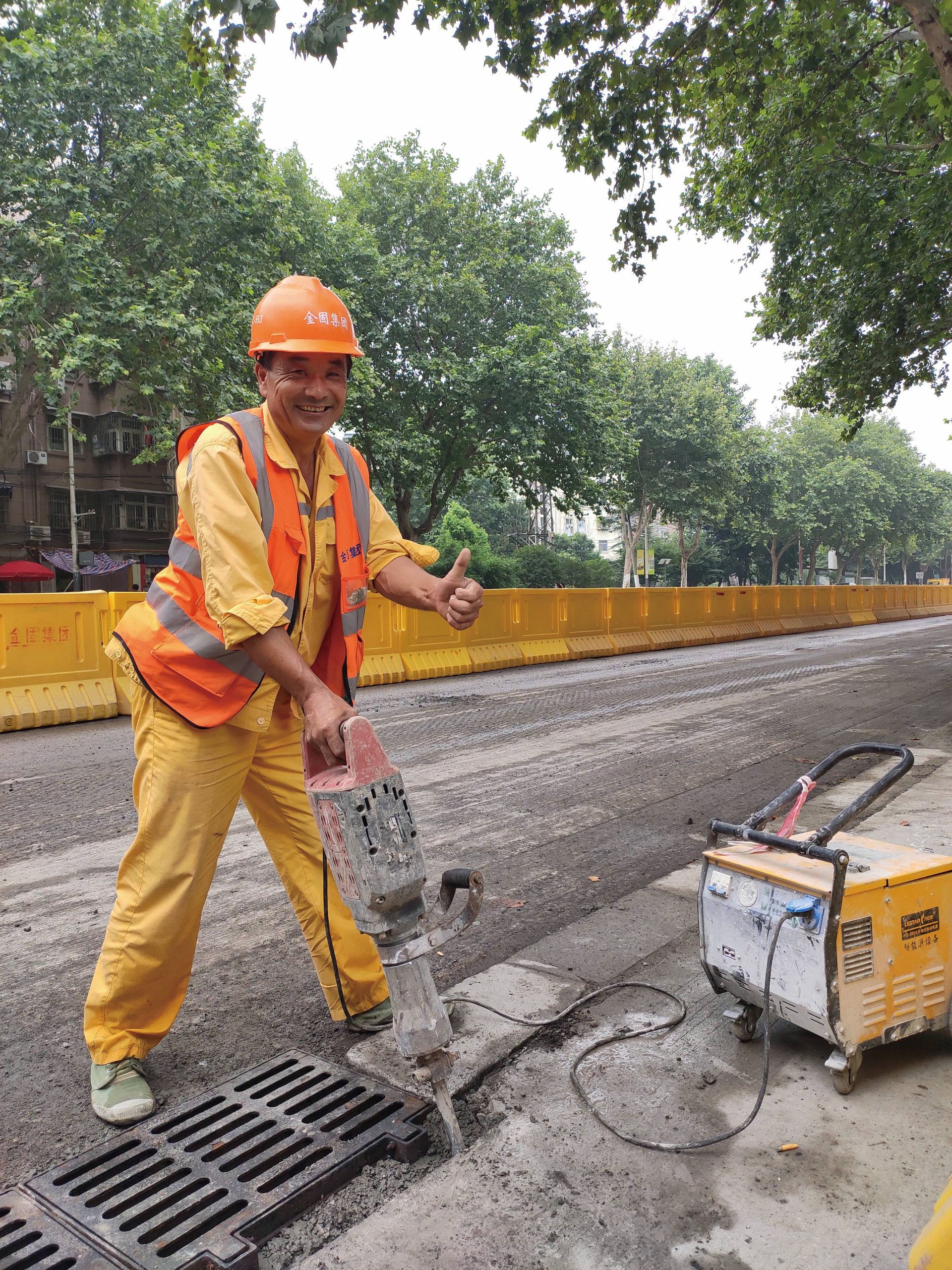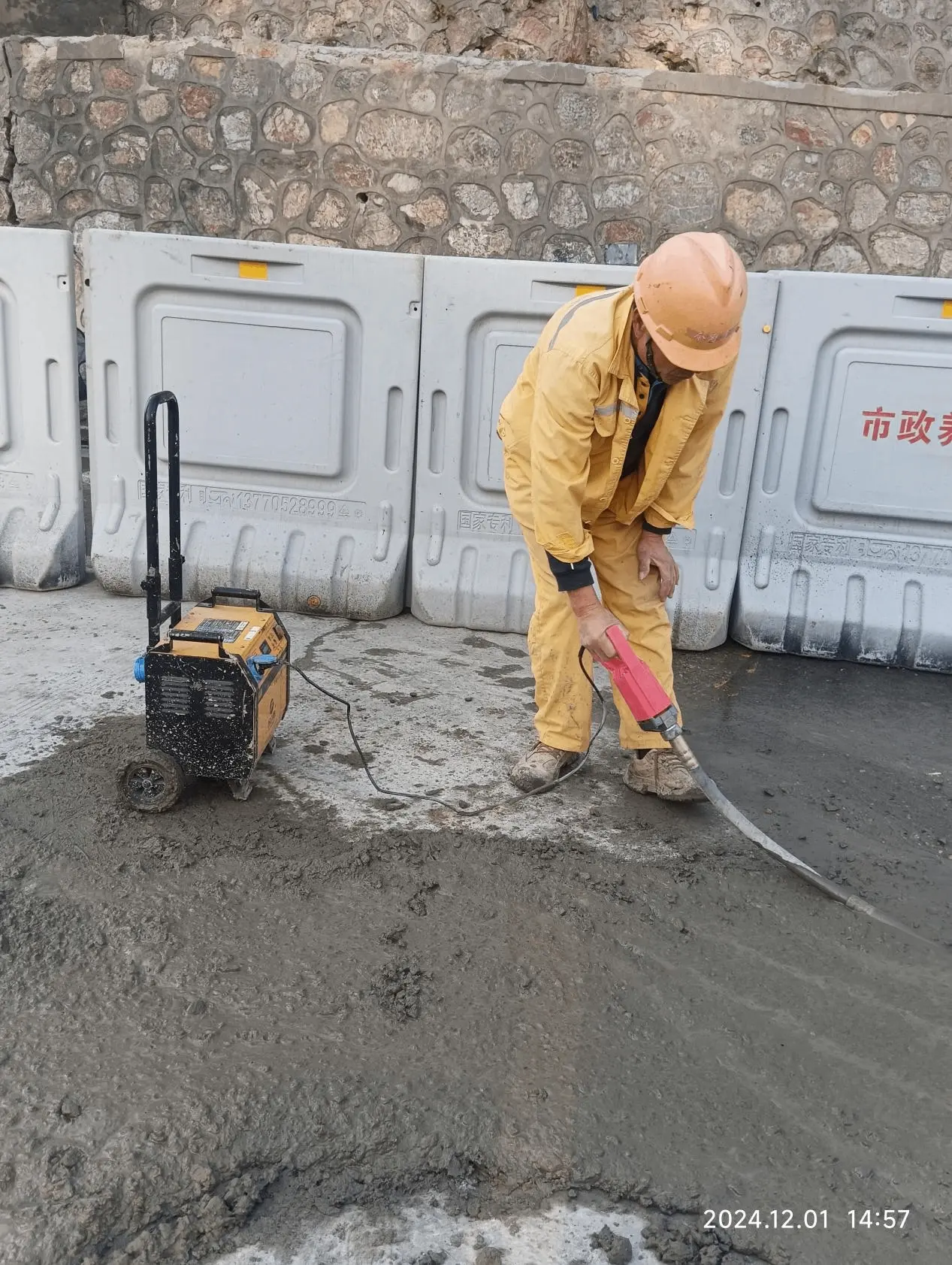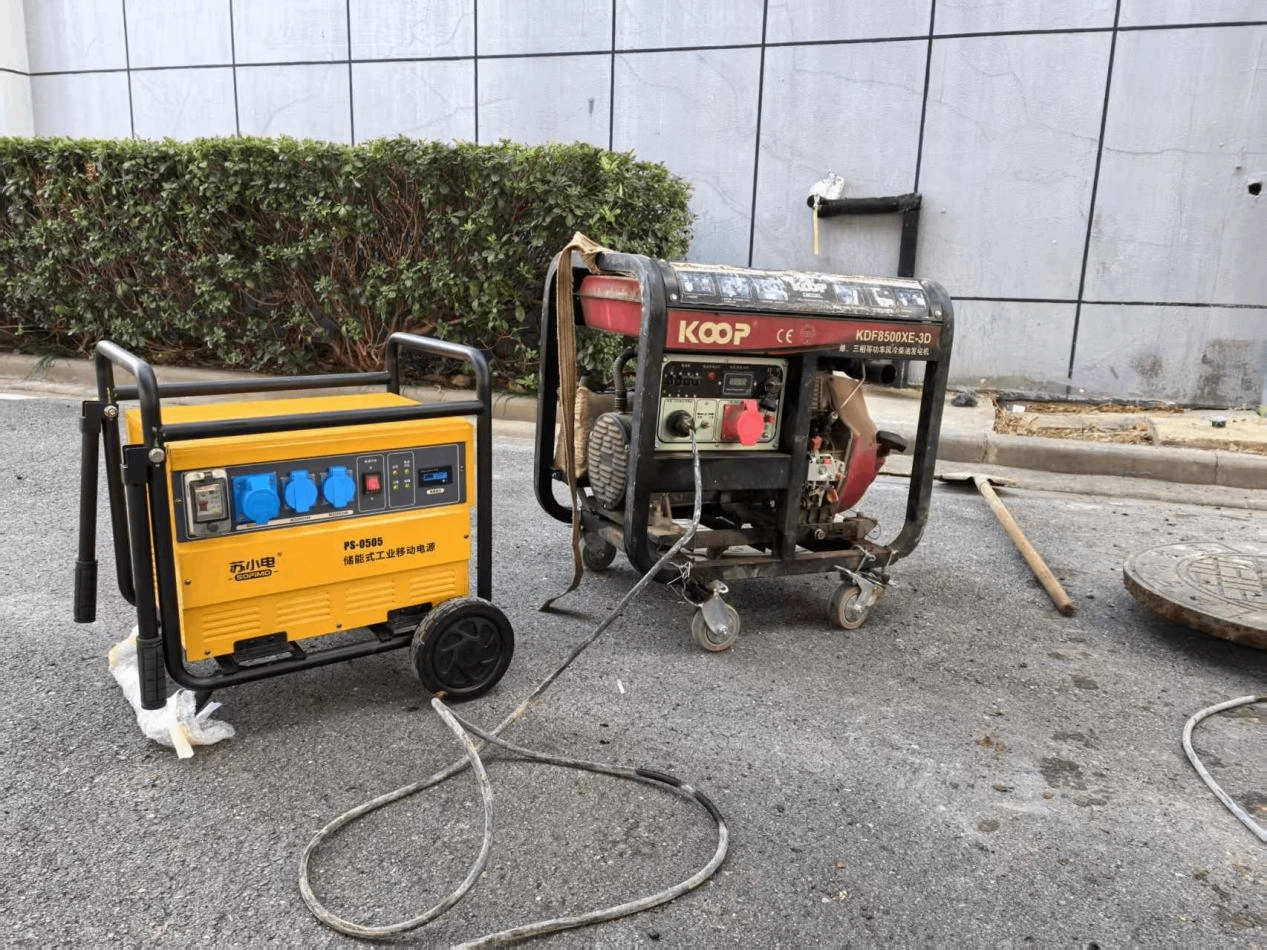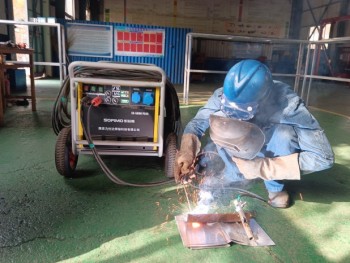Des difficultés d'accès à l'électricité pour les projets urbains ? Les retards et les installations complexes sont frustrants. Je pense que les centrales électriques portables industrielles sont la solution simple et efficace dont nous avons besoin aujourd'hui.
D'après mon expérience, ces stations alimentent de manière fiable les outils essentiels des équipes de voirie, l'éclairage pour les réparations nocturnes ou les événements publics, ainsi que les systèmes de communication. Elles soutiennent diverses tâches municipales, des services de travaux publics aux parcs et aux loisirs, en veillant à ce que les opérations se déroulent sans problème en l'absence d'alimentation fixe.
Cette polyvalence est essentielle, mais comment les utiliser exactement ? Examinons les tâches spécifiques qu'ils accomplissent, leur rôle crucial dans les situations d'urgence, les avantages qu'ils présentent pour les infrastructures éloignées et la manière dont ils se comparent aux générateurs traditionnels. La compréhension de ces points aide les acheteurs municipaux à prendre des décisions éclairées pour des solutions d'alimentation fiables et efficaces.
Quelles sont les tâches municipales spécifiques qui nécessitent une alimentation portable fiable ?
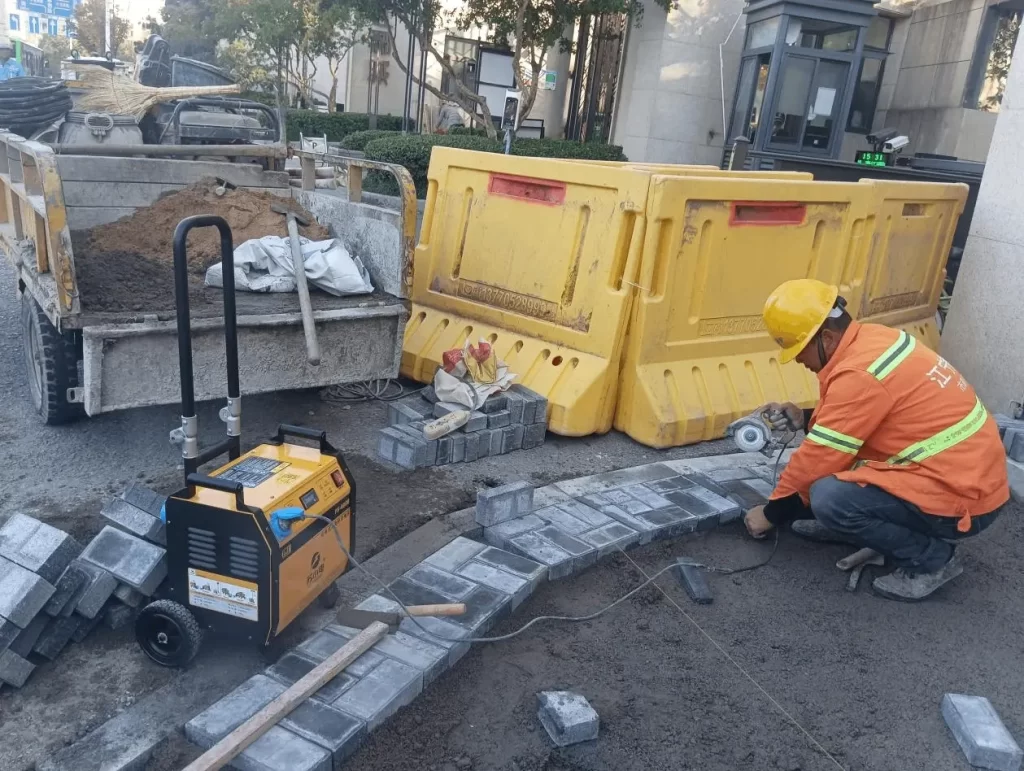
Faire fonctionner des outils électriques à des kilomètres d'une prise de courant ? Ou éclairer un site après la tombée de la nuit ? Je sais qu'il peut être difficile de trouver une alimentation électrique fiable et facile pour divers travaux urbains, ce qui entraîne des retards et des maux de tête.
Je les ai vus tout alimenter, des marteaux-piqueurs et bétonnières pour les équipes de voirie à l'éclairage essentiel pour l'entretien nocturne des infrastructures et les opérations de sécurité publique. Leur adaptabilité est essentielle pour les tâches quotidiennes des municipalités et permet de respecter le calendrier des projets.
Les centrales électriques portables industrielles apportent un nouveau niveau de flexibilité aux opérations municipales. Les villes gèrent un large éventail de tâches réparties sur de vastes zones, souvent éloignées des prises électriques standard. Une alimentation électrique fiable n'est pas un luxe ; elle est essentielle à l'efficacité et à la sécurité. Pensez au travail quotidien des services de travaux publics.
Alimenter les outils de construction et d'entretien
Les équipes routières travaillent souvent dans des endroits où le réseau électrique n'est pas disponible ou difficilement accessible. Elles doivent faire fonctionner des équipements lourds tels que :
Marteaux-piqueurs pour casser la chaussée
Bétonnières pour réparations
Pompes à eau pour l'assèchement des chantiers
Scies mécaniques pour la coupe de matériaux
Soudeurs pour les réparations métalliques
Les centrales électriques portables fournissent la puissance nécessaire sans le bruit, les fumées ou les problèmes de transport de carburant associés aux générateurs à gaz traditionnels. Ceci est particulièrement important dans les zones résidentielles ou sensibles au bruit. La rapidité d'installation permet aux équipes de passer plus de temps à travailler et moins de temps à gérer les sources d'énergie.
Illuminer les zones de travail et les événements publics
Les réparations routières nocturnes, l'entretien des infrastructures ou les événements publics spéciaux nécessitent un éclairage important et fiable. L'installation de longs câbles peut être dangereuse et prendre beaucoup de temps. Les centrales électriques portables peuvent facilement faire fonctionner plusieurs tours d'éclairage LED à haute luminosité ou des projecteurs de travail plus petits. Cela permet d'assurer :
Sécurité : Les zones bien éclairées réduisent le nombre d'accidents pour les travailleurs et le public.
Efficacité : Les travaux peuvent se poursuivre en toute sécurité après la tombée de la nuit, ce qui permet de raccourcir les délais des projets.
Commodité : La mise en place d'un éclairage temporaire pour les festivals, les marchés ou les rassemblements communautaires devient beaucoup plus simple.
Équipement d'inspection et de surveillance
Les municipalités inspectent régulièrement les infrastructures telles que les ponts, les canalisations d'égout et les conduites d'eau. Ces inspections font souvent appel à des équipements électroniques spécialisés :
Caméras robotisées pour l'inspection des canalisations
Capteurs pour le contrôle de l'intégrité structurelle
Matériel d'essai pour l'analyse de la qualité de l'eau
Ces appareils ont besoin d'une alimentation propre et stable, que les stations portables fournissent de manière fiable. Contrairement aux générateurs, le fonctionnement silencieux des stations de batteries n'interfère pas avec les enregistrements audio ou vidéo sensibles lors des inspections.
Voici un aperçu des tâches municipales courantes et de leurs besoins en solutions d'alimentation électrique :
| Tâche municipale | Équipement commun alimenté | Besoins en énergie de la clé | Pourquoi les stations portables sont-elles adaptées ? |
| Réparation et entretien des routes | Marteaux-piqueurs, mélangeurs, pompes, scies | Puissance élevée, fiabilité | Alimente les outils lourds sans fumées ni bruit excessif |
| Entretien des parcs et des loisirs | Débroussailleuses, souffleurs, stations de charge | Portabilité, fonctionnement silencieux | Facile à déplacer, convient aux espaces publics |
| Entretien des feux de circulation | Ordinateurs portables, outils de diagnostic, lampes temporaires | Alimentation stable, installation rapide | Une alimentation fiable pour l'électronique sensible, un déploiement rapide |
| Événements spéciaux | Éclairage, systèmes de sonorisation, stands pour les vendeurs | Évolutivité, sécurité, silence | Alimente divers besoins de manière propre et silencieuse |
| Inspections des infrastructures | Caméras, capteurs, ordinateurs portables | Énergie propre, portabilité | Protège les équipements sensibles et permet d'atteindre facilement les endroits éloignés |
La possibilité d'apporter une énergie substantielle et propre directement sur le lieu d'intervention transforme le mode de fonctionnement des équipes municipales. Elle réduit les temps d'installation, la dépendance aux combustibles fossiles (lorsqu'ils sont chargés par des sources d'énergie renouvelables) et améliore les conditions de travail. Cela a un impact direct sur l'efficacité des projets et le respect du budget, des facteurs essentiels pour tout responsable des achats.
Comment Alimentation portable industrielle soutiennent les opérations d'intervention d'urgence ?
Lorsqu'une catastrophe survient, c'est d'abord l'électricité qui fait défaut. Coordonner les secours sans communication ni lumière est un cauchemar que je ne souhaite à personne. L'alimentation portable est vitale pour les premiers intervenants.
À mon avis, il s'agit de systèmes de secours essentiels. Ces stations alimentent instantanément les centres de communication, les équipements médicaux, l'éclairage d'urgence et les feux de signalisation en cas de défaillance du réseau principal, garantissant ainsi le maintien des services essentiels dans les moments critiques.
Dans les situations d'urgence telles que les inondations, les tempêtes, les tremblements de terre ou les pannes de courant majeures, la perte immédiate de l'électricité du réseau peut paralyser les efforts d'intervention. Les centrales industrielles portables deviennent des atouts inestimables pour maintenir l'ordre, la sécurité et la communication au moment où l'on en a le plus besoin. Leur déploiement rapide et leur facilité d'utilisation sont des avantages décisifs dans les situations chaotiques.
Maintenir les lignes de communication
Une communication efficace est l'épine dorsale de toute intervention d'urgence. Sans électricité, les centres de commandement peuvent s'éteindre, les radios ne peuvent pas être rechargées et les systèmes d'alerte publique peuvent tomber en panne. Les centrales électriques portables peuvent :
Maintenir les postes de commandement opérationnels en alimentant les ordinateurs, les écrans et le matériel de communication.
Recharger les radios portatives, les téléphones satellites et les appareils mobiles des équipes de terrain.
Alimentez des répéteurs cellulaires temporaires ou des points d'accès Wi-Fi pour rétablir la connectivité.
Cela garantit que la coordination entre les différentes agences (police, pompiers, services médicaux, travaux publics) reste possible, ce qui permet de mieux organiser la réponse et de la rendre plus efficace.
Alimentation des abris temporaires et de l'aide médicale
Lorsque les habitants sont déplacés, des abris temporaires sont installés dans des écoles, des centres communautaires ou des tentes. Ces lieux ne disposent souvent pas d'une alimentation électrique de secours suffisante pour faire face à l'afflux soudain de personnes et de besoins. Les centrales électriques portables peuvent fournir l'électricité nécessaire pour :
Éclairage de base à l'intérieur des abris.
Des points de recharge pour les téléphones et les appareils essentiels des sinistrés.
Alimentation de petits appareils médicaux dans les postes de secours (par exemple, nébuliseurs, moniteurs de signes vitaux).
Faire fonctionner de petits appareils de chauffage ou des ventilateurs pour la climatisation.
Pour les unités médicales mobiles ou les centres de triage sur le terrain, ces stations offrent une source d'énergie propre et silencieuse, qui convient beaucoup mieux aux environnements de soins aux patients que les générateurs bruyants et générateurs de fumée.
Garantir l'infrastructure de sécurité publique
Les pannes d'électricité peuvent mettre hors service les infrastructures critiques de sécurité publique. Les centrales électriques portables offrent une solution rapide pour :
Signaux de circulation : L'alimentation temporaire des intersections clés permet de fluidifier le trafic et d'éviter les accidents lorsque les signaux s'éteignent.
Éclairage d'urgence : L'éclairage des voies d'évacuation, des points d'accès des véhicules d'urgence ou des installations critiques renforce la sécurité.
Systèmes de sécurité : Alimentation de caméras de sécurité temporaires ou de systèmes de contrôle d'accès dans des lieux sensibles.
Le tableau ci-dessous présente les principaux scénarios d'urgence et la contribution des centrales portables :
| Scénario d'urgence | Besoins critiques en électricité | L'utilité des stations portables | Principaux avantages |
| Panne généralisée | Communications, contrôle du trafic, alimentation des abris, dispositifs médicaux | Pouvoirs des postes de commandement, des signaux, des abris, du matériel médical de base | Continuité |
| Catastrophe naturelle | Éclairage de secours, communications sur le terrain, pompes à eau, aide médicale | Alimente les lumières, charge les radios, fait fonctionner les pompes, soutient les cliniques de terrain. | Soutien à la vie |
| Crise de santé publique | Sites mobiles de dépistage/vaccination, équipement médical | Alimente les lumières, les réfrigérateurs, les ordinateurs et les appareils médicaux de base. | Déploiement rapide |
| Défaillance de l'infrastructure | Signaux de circulation temporaires, pompes à eau, outils de réparation | Fait fonctionner les signaux, les pompes et les outils pour des réparations immédiates. | Sécurité et récupération |
La fiabilité est primordiale dans les situations d'urgence. Les centrales électriques portables de qualité industrielle sont conçues pour une utilisation exigeante, offrant une alimentation fiable sur laquelle les premiers intervenants et les responsables des situations d'urgence peuvent compter. Leur capacité à être rechargées rapidement (parfois grâce à des panneaux solaires en cas d'événements prolongés) ajoute à leur résilience. Pour un responsable des achats qui évalue l'équipement de préparation aux situations d'urgence, ces centrales constituent une solution robuste et polyvalente.
Quels sont les principaux avantages de l'alimentation en énergie des infrastructures des villes isolées ?
Pensez aux parcs éloignés ou aux amplificateurs de signaux situés loin des lignes de réseau. Les alimenter signifiait auparavant des installations complexes et coûteuses. Je trouve que les stations portables simplifient énormément les choses, ce qui permet d'économiser du temps et de l'argent.
De mon point de vue, le principal avantage est de fournir une alimentation fiable et propre à des équipements distants tels que des stations de surveillance de l'environnement, des relais de communication ou des éclairages de parcs, sans qu'il soit nécessaire de creuser des tranchées coûteuses ou d'étendre le réseau. C'est efficace et rentable.
De nombreux éléments essentiels de l'infrastructure municipale sont situés loin des réseaux électriques établis. L'extension des lignes électriques jusqu'à ces endroits éloignés peut être d'un coût prohibitif et perturber l'environnement. Les centrales électriques portables industrielles offrent une alternative pratique et souvent plus durable pour ces situations.
Une alimentation électrique rentable sans extension du réseau
Le coût de l'extension du réseau électrique, même sur une courte distance, peut atteindre des dizaines ou des centaines de milliers de dollars. Cela comprend les tranchées, le câblage, les transformateurs, les permis et la main-d'œuvre. Pour les sites isolés qui ont besoin d'une quantité d'énergie relativement faible, cet investissement est difficile à justifier. Les centrales électriques portables fournissent une source d'énergie immédiate pour une fraction du coût initial.
Réduction des dépenses d'investissement : Évite les frais de raccordement au réseau.
Déploiement plus rapide : L'électricité peut être disponible en quelques heures ou quelques jours, et non en quelques mois.
Flexibilité : Les stations peuvent être déplacées si l'emplacement de l'actif change.
Soutenir la surveillance et la recherche environnementales
Les villes déploient souvent des capteurs dans des zones éloignées pour surveiller la qualité de l'air, le niveau de l'eau ou la faune. Ces capteurs ont besoin d'une alimentation constante pour collecter et transmettre des données.
Capteurs à distance : Alimentation des moniteurs de qualité de l'air et de l'eau dans les parcs ou à proximité des zones industrielles.
Stations météorologiques : Assurer le fonctionnement continu des équipements météorologiques.
Équipement de recherche : Soutenir des projets de recherche temporaires sur le terrain menés par des urbanistes ou des universités partenaires.
Les centrales électriques portables, en particulier lorsqu'elles sont associées à des panneaux solaires de recharge, peuvent offrir une solution d'alimentation autonome pour ces applications à long terme et à faible consommation. Leur fonctionnement silencieux ne perturbe pas la faune ni les mesures environnementales sensibles.
Renforcer la sécurité et la communication à distance
Des caméras de sécurité, des relais de communication et des boîtes d'appel pour la sécurité publique sont parfois nécessaires dans les parcs, le long des sentiers ou dans les zones sous-développées.
Caméras de sécurité : Alimentation des systèmes de surveillance dans les parkings éloignés ou à l'entrée des parcs.
Relais de communication : Assurer la connectivité pour les services d'urgence ou le Wi-Fi public dans les zones périphériques.
Éclairage à distance : Fournir un éclairage de sécurité le long des sentiers ou aux arrêts de bus isolés sans accès au réseau.
Les stations portables permettent de déployer ces actifs précieux sans avoir à supporter les dépenses importantes liées à l'extension du réseau.
Voici une comparaison illustrant le facteur coût :
| Fonctionnalité | Centrale électrique portable (+ option solaire) | Extension de la grille (exemple : 1 mile) |
| Coût initial | Faible à modéré (--$) | Très élevé (-$) |
| Temps d'installation | Heures / jours | Semaines / Mois |
| Impact sur l'environnement | Minimales (zéro émission pendant l'utilisation) | Important (creusement de tranchées, etc.) |
| Flexibilité/réinstallation | Haut | Très faible / Impossible |
| Complexité des autorisations | Faible / Aucune | Haut |
| Coûts permanents du carburant | Aucun (électrique/solaire) | N/A (tarifs d'électricité standard) |
| Maintenance | Faible (état de la batterie) | Modéré (entretien de la ligne) |
Pour les responsables des achats municipaux qui cherchent à maximiser l'efficacité budgétaire tout en développant les services municipaux et les capacités de surveillance, les centrales électriques portables constituent une solution convaincante pour l'alimentation des infrastructures éloignées. Elles offrent une combinaison de prix abordables, de rapidité et de respect de l'environnement que les méthodes traditionnelles ne peuvent souvent pas égaler.
Comment Centrale électrique portable industrielle par rapport aux générateurs traditionnels pour une utilisation en ville ?
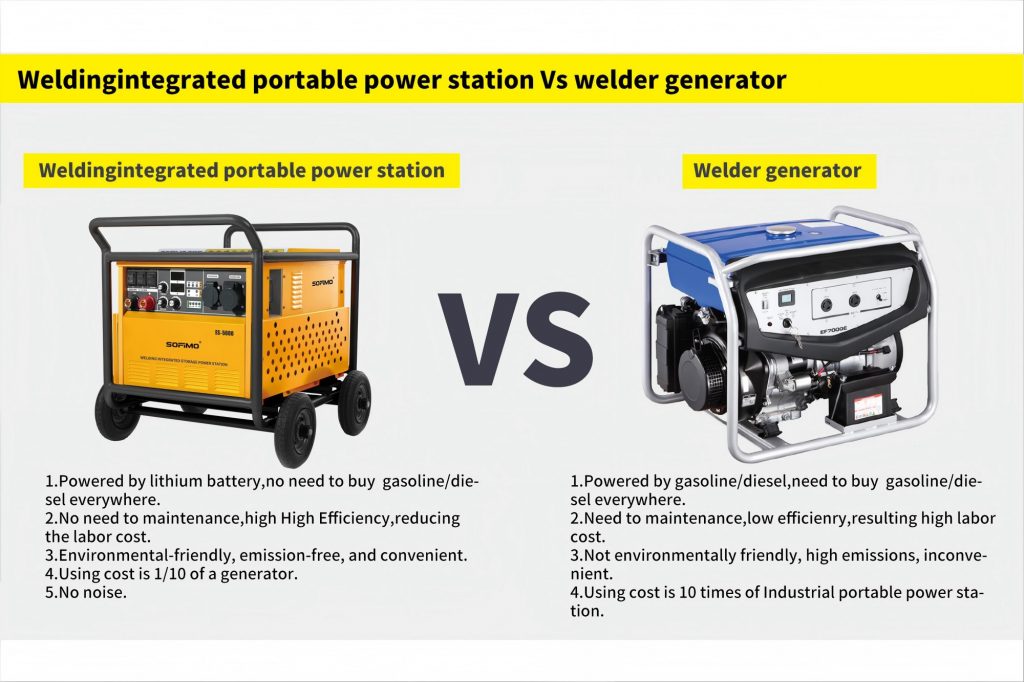
Les générateurs à gaz ont été la solution, mais le bruit, les fumées et les pannes de carburant sont des maux de tête constants auxquels j'ai dû faire face. N'y a-t-il pas une meilleure solution pour les villes, en particulier dans les zones peuplées ?
D'après ce que j'ai vu, les centrales électriques portables se distinguent par leur fonctionnement silencieux, l'absence d'émissions, une maintenance réduite et leur facilité d'utilisation. Si les groupes électrogènes peuvent parfois offrir une plus longue durée de fonctionnement continu, les centrales sont souvent mieux adaptées aux zones sensibles et à l'utilisation en intérieur.
Pendant des décennies, les générateurs à essence ou diesel ont été le choix par défaut pour les besoins en énergie hors réseau dans les projets municipaux. Cependant, les centrales électriques portables industrielles (essentiellement de grands systèmes de batteries) constituent une alternative moderne avec des avantages distincts et quelques différences de capacité. Il est essentiel de les comprendre pour choisir le bon outil pour le travail à effectuer.
Différences en matière de bruit et d'émissions
Il s'agit souvent de la différence la plus immédiate et la plus importante, en particulier dans les zones urbaines ou suburbaines.
Générateurs : Notoirement bruyants, ils dépassent souvent les limites imposées par les ordonnances sur le bruit. Ils produisent des gaz d'échappement nocifs (monoxyde de carbone, oxydes d'azote, particules) qui polluent l'air et présentent des risques pour la santé, rendant impossible leur utilisation à l'intérieur.
Stations d'alimentation portables : Elles fonctionnent presque sans bruit. Elles ne produisent aucune émission pendant leur fonctionnement, ce qui les rend sûres pour une utilisation en intérieur et idéales pour les zones sensibles au bruit comme les rues résidentielles, les parcs, les hôpitaux et les écoles.
Coûts opérationnels et maintenance
Si le prix d'achat initial des générateurs est parfois moins élevé pour une puissance équivalente, leur coût pendant toute leur durée de vie peut être plus élevé.
Générateurs : Ils nécessitent un ravitaillement constant en essence ou en diesel, dont le prix fluctue et qui doit être transporté ou stocké en toute sécurité. Ils nécessitent un entretien régulier : vidange d'huile, remplacement des bougies, nettoyage des filtres. Les temps d'arrêt pour les réparations peuvent avoir un impact sur les projets.
Stations d'alimentation portables : Rechargées à l'aide de l'électricité du réseau (souvent moins chère que le carburant) ou de panneaux solaires (potentiellement gratuits). Elles comportent très peu de pièces mobiles, d'où une maintenance minimale - il s'agit essentiellement de veiller à la santé de la batterie. Cela se traduit par des dépenses opérationnelles moindres et une plus grande fiabilité.
Facilité d'utilisation et considérations de sécurité
La facilité d'utilisation et la sécurité sont essentielles pour les équipes municipales.
Générateurs : Peuvent être lourds et encombrants. Leur démarrage peut parfois être difficile (tirer sur les cordes). Le ravitaillement en carburant comporte des risques de déversement et d'incendie. Les gaz d'échappement constituent un risque majeur pour la sécurité s'ils ne sont pas correctement ventilés.
Stations d'alimentation portables : Généralement conçues pour être transportées et dotées de poignées ou de roues. Démarrage simple par bouton-poussoir. Pas de combustibles inflammables à manipuler. L'absence d'émissions réduit considérablement les risques pour la sécurité, en particulier dans les espaces clos ou mal ventilés.
Durée d'utilisation et puissance de sortie
C'est ici que la comparaison doit être nuancée.
Générateurs : Ils peuvent généralement fonctionner tant qu'il y a du carburant, ce qui leur permet d'effectuer des tâches de longue durée et de grande puissance sans interruption (à condition qu'il soit possible de les réapprovisionner en carburant).
Stations d'alimentation portables : L'autonomie est limitée par la capacité de la batterie. La recharge prend du temps (bien que certains modèles permettent une recharge en continu). Bien qu'il existe des modèles à haut rendement, les demandes de puissance les plus élevées peuvent encore être satisfaites par de gros générateurs. Cependant, pour de nombreuses tâches municipales typiques (outils, éclairage, électronique), les stations modernes offrent une capacité et une puissance suffisantes. Les stations peuvent également être "enchaînées" ou échangées pour une alimentation continue.
Voici un résumé comparatif :
| Fonctionnalité | Centrale électrique portable | Générateur traditionnel | Avantage |
| Bruit | Très silencieux | Fort | Centrale électrique (surtout dans les zones peuplées) |
| Émissions | Zéro (en cours d'utilisation) | Gaz d'échappement (CO, NOx, PM) | Centrale électrique (santé, environnement, utilisation intérieure) |
| Ravitaillement en carburant | Électricité / Solaire | Essence / Diesel | Centrale électrique (coût, commodité, sécurité) |
| Maintenance | Minime | Régulier (huile, filtres, bouchons) | Centrale électrique (coût réduit, disponibilité accrue) |
| Portabilité | Généralement bon | Peut être lourd / encombrant | Souvent Centrale électrique (selon la taille du modèle) |
| Sécurité | Élevé (pas de fumées, pas de carburant liquide) | Modéré (fumées, manipulation de carburant) | Centrale électrique |
| Coût initial | Peut être plus élevé (pour une puissance de crête équivalente) | Peut être inférieur (pour une puissance de crête équivalente) | Générateur (parfois, pour l'achat initial) |
| Temps d'exécution | Limité par la batterie (rechargeable) | Limité par le réservoir de carburant (rechargeable) | Générateur (pour les utilisations très longues et à forte consommation) |
| Utilisation à l'intérieur | Oui | Non (dangereux) | Centrale électrique |
Pour les acheteurs municipaux, le choix dépend de l'application spécifique. Pour les tâches nécessitant du silence, de l'air pur, une utilisation à l'intérieur ou une facilité d'utilisation avec un minimum d'entretien, la centrale électrique portable est clairement supérieure. Pour les besoins de très longue durée et de forte puissance où le bruit et les fumées ne sont pas des préoccupations majeures, un générateur peut encore être envisagé, mais les avantages de l'alimentation par batterie rendent les centrales de plus en plus attrayantes pour un plus grand nombre d'applications municipales.
Les centrales électriques portables industrielles offrent une alimentation fiable, propre et polyvalente. Elles s'avèrent essentielles pour diverses tâches municipales, les interventions d'urgence et l'alimentation efficace des infrastructures des villes éloignées aujourd'hui.Si vous en avez besoin, contactez-nous maintenant avec 20 ans d'expérience dans la production et la livraison de machines à souder alimentées par batterie pour vous fournir un service.

